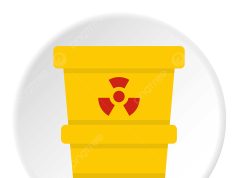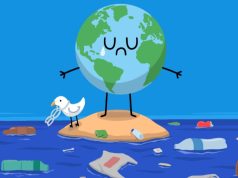Welcome to our blog, where we delve into the critical issue of soil pollution. Join us as we explore the causes and sources of soil pollution, the adverse impacts on ecosystems and human health, and the various strategies and technologies available for soil remediation.
Understanding Soil Pollution:
1.1 Definition and Scope:
Defining soil pollution as the contamination of soil with harmful substances that adversely affect its quality, fertility, and ability to support life.
Explaining the wide range of pollutants that can contaminate soil, including heavy metals, pesticides, industrial chemicals, and petroleum hydrocarbons.
1.2 Sources and Causes:
Discussing the primary sources of soil pollution, such as industrial activities, agricultural practices, improper waste disposal, mining activities, and urbanization.
Exploring the causes of soil pollution, including chemical spills, improper use of fertilizers and pesticides, improper waste management, and atmospheric deposition.
Impacts of Soil Pollution:
2.1 Ecological Consequences:
Highlighting the adverse effects of soil pollution on ecosystems, including the loss of biodiversity, disruption of nutrient cycles, and contamination of water bodies through leaching and runoff.
Discussing the long-term impacts on plant and animal life, as well as soil-dwelling organisms like earthworms and beneficial microorganisms.
2.2 Human Health Risks:
Addressing the potential health risks associated with soil pollution, including the contamination of food crops with toxic substances.
Discussing the pathways of exposure, such as ingestion, inhalation, and dermal contact, and the adverse health effects, including cancer, developmental disorders, and organ damage.
2.3 Soil Degradation and Loss of Agricultural Productivity:
Exploring how soil pollution contributes to soil degradation, erosion, and loss of fertility.
Discussing the implications for agricultural productivity, food security, and sustainable land use.
Soil Remediation Strategies:
3.1 Soil Testing and Site Assessment:
Highlighting the importance of soil testing and site assessment to determine the extent and nature of soil pollution.
Discussing the role of sampling, laboratory analysis, and risk assessment in guiding soil remediation efforts.
3.2 Physical Remediation Techniques:
Exploring physical techniques used in soil remediation, such as soil excavation, soil vapor extraction, and soil washing.
Discussing how these techniques remove or reduce the concentration of pollutants in the soil through physical means.
3.3 Chemical and Biological Remediation:
Addressing chemical and biological techniques for soil remediation, including soil flushing, phytoremediation, and bioremediation.
Explaining how these methods utilize chemical amendments or living organisms to degrade or immobilize pollutants in the soil.
3.4 Soil Management Practices:
Discussing the importance of implementing proper soil management practices to prevent soil pollution and promote soil health.
Exploring practices such as organic farming, crop rotation, erosion control measures, and responsible waste management.
Policy and Regulation:
4.1 National and International Frameworks:
Discussing national and international frameworks and regulations aimed at preventing and addressing soil pollution.
Highlighting examples such as the Soil Framework Directive in the European Union and the Soil and Water Conservation Act in the United States.
4.2 Pollution Prevention and Control:
Exploring strategies for pollution prevention and control, including the implementation of best management practices, environmental impact assessments, and the promotion of sustainable land use practices.
4.3 Stakeholder Engagement and Education:
Addressing the importance of stakeholder engagement and public education in raising awareness about soil pollution and promoting sustainable soil management practices.
Discussing the role of government agencies, educational institutions, NGOs, and community involvement in addressing soil pollution.
Conclusion:
As we conclude our exploration of soil pollution, it is evident that this environmental issue poses significant challenges to ecosystems, agricultural productivity, and human health. By understanding the causes and impacts of soil pollution and implementing effective soil remediation strategies, we can work towards restoring and protecting our valuable soil resources. It is crucial to promote sustainable land use practices, raise awareness, and advocate for robust policies and regulations to prevent soil pollution. Join us in future blog posts as we continue to address pressing environmental challenges and advocate for the preservation of our natural resources.























